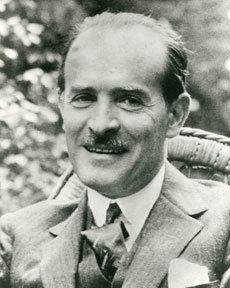Name Rene Gimpel Books Diary of an Art Dealer | Role Art dealer | |
 | ||
Died 1945, Neuengamme, Hamburg, Germany | ||
Gallery Deals - the artist/gallery relationship
Rene Gimpel (1881–1945) was a prominent French art dealer, friend and patron of living artists and collectors. He was the son of a picture dealer and the brother-in-law of Sir Joseph Duveen. His witty and acerbic Journal d'un collectionneur: marchand de tableaux (1963, revised edition 2011), with a preface by Jean Guehenno of the Academie francaise, was translated and published as Diary of an Art Dealer (1966), and is a primary source for the contemporary history of modern art and of collecting between the World Wars.
Trained in the classic traditions of connoisseurship, a great admirer of Chardin and in general the works of the French eighteenth century, Gimpel had an instinctive sympathy for the modern contemporaries among whom he moved: Georges Braque, Mary Cassatt, Claude Monet, Pablo Picasso and above all, his intimate friend Marie Laurencin. A friend of Marcel Proust, whom he met at Cabourg in 1907, he had a selective high regard for many museum professionals but a loathing of the experts who provided attributions and certificates of authenticity for paintings in the market.
In 1905 his father, Ernest Gimpel, and Nathan Wildenstein began negotiating to buy a selection of the magnificent Paris collection of Rodolphe Kann; however, the powerful firm of Duveen Bros muscled in and bought out their interest, eventually acquiring the entire collection in 1906 for 21 million francs (or over $US4 million), including what were considered in those days twelve Rembrandts. While breaking up the Kann collection and selling it on was a protracted process for the Duveens, E. Gimpel & Wildenstein (Paris and New York) benefited. Rene Gimpel's repeated trips to the United States from 1902 resulted in significant sales to wealthy North American collectors, some of whom he skewered in his private diaries as showing off their artworks "like rich children showing off their toys". In May 1919, three weeks of concentrated trading on behalf of E. Gimpel & Wildenstein resulted in sales of five paintings, including Rembrandt's Portrait of Titus to Jules Bache (now Metropolitan Museum of Art, New York, as Man in a Red Cloak, style of Rembrandt)[1], a tapestry Saint Veronica to Mrs Florence Blumenthal (Metropolitan Museum of Art, New York,[2], and a Houdon portrait bust to C. Ledyard Blair, Armand-Thomas Hue, Marquis de Miromesnil, Frick Collection, New York[3] for $730,000.
During World War II Gimpel was interned by the Vichy authorities for his activities in the Resistance, released in 1942, but then re-arrested. In confinement he taught English to his fellow prisoners, in preparation, he said, for their coming liberation. He was sent to Neuengamme concentration camp, near Hamburg, Germany, where his health gave out under the strenuous conditions under which he was held.
